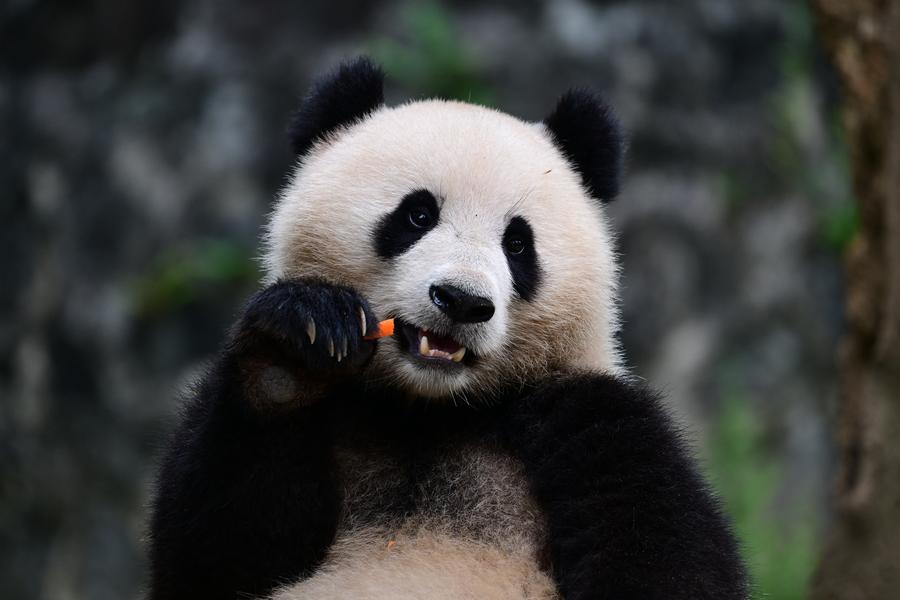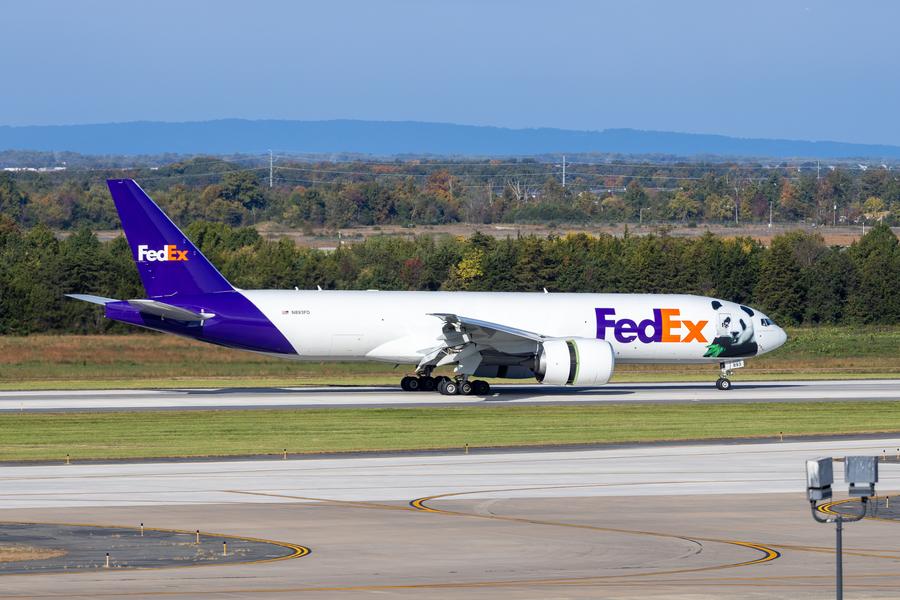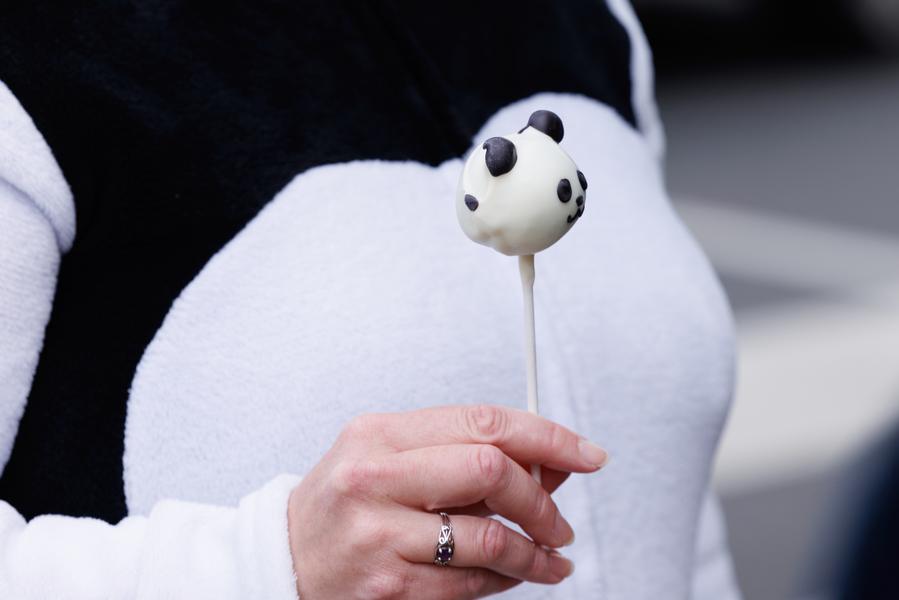Feature: Washington zoo welcomes China's new panda couple

This photo taken on Aug. 7, 2024 shows giant panda Qing Bao (female) in Chengdu, southwest China's Sichuan Province. (China Conservation and Research Center for the Giant Panda (CCRCGP)/Handout via Xinhua)
After nearly a year without giant pandas, the Smithsonian's National Zoo and Conservation Biology Institute's (NZCBI) panda house has new residents -- Bao Li and Qing Bao, a giant panda couple from China, a big joy to the zoo.
by Xiong Maoling, Hu Yousong
WASHINGTON, Oct. 21 (Xinhua) -- After nearly a year without giant pandas, the Smithsonian's National Zoo and Conservation Biology Institute's (NZCBI) panda house has new residents -- Bao Li and Qing Bao, a giant panda couple from China, a big joy to the zoo.
The two giant pandas arrived at Dulles International Airport on Oct. 15 aboard a dedicated "FedEx Panda Express" Boeing 777F aircraft. They were transported in crates with breathing holes to the zoo in northwestern Washington D.C. by truck, officially beginning their 10-year residency.

An airplane transporting giant pandas arrives at Dulles International Airport near Washington, D.C., the United States, on Oct. 15, 2024. (Xinhua/Hu Yousong)
The pandas will undergo a quarantine and acclimation period of at least 30 days before their first public debut scheduled for Jan. 24 next year.
The arrival of the two three-year-old pandas has brought new vitality to the zoo.
Giant pandas Mei Xiang and Tian Tian -- after living in the Washington zoo for over 20 years -- and their male cub Xiao Qi ji, who was born and raised in the zoo, returned to China in November Last year, leaving the panda house temporarily empty.
The time without pandas was "very sad," assistant curator of giant pandas Laurie Thompson, who has cared for Mei Xiang and Tian Tian since they arrived in 2000, told Xinhua, calling it "a hard year." She was thrilled when she knew new pandas were coming.
The male panda, Bao Li, is the grandson of Mei Xiang and Tian Tian.
"He actually reminds me very much of his grandpa. He looks like him. Tian Tian also was very people-oriented. He liked to be around his keepers and I'm seeing the same thing with Bao Li," said Thompson. "He's a very sweet boy, seems a little bit more laid back."
Whereas, the female panda Qing Bao is a little bit more "nervous" and "cautious," often doing what she wants and not always responding promptly when called.
Thompson said she hopes that as Qing Bao settles in, they will get to know her personality better.

Giant-panda-shaped sweet is given out by a local bakery across the street from the Smithsonian's National Zoo and Conservation Biology Institute as the pandas arrive in Washington, D.C., the United States, Oct. 15, 2024. (Photo by Aaron Schwartz/Xinhua)
Zoo veterinarians James Steeil and Thompson traveled to the Dujiangyan Base of the China Conservation and Research Center for Giant Panda in Sichuan Province, and accompanied the two pandas throughout their transoceanic journey.
"We make sure that they're behaving and acting healthy during the trip," Steeil told Xinhua. They observed how pandas interacted with the environment and learned the demeanor and cues used by the pandas' keepers.
Steeil said that the pandas' diet consists mainly of bamboo, but during training sessions, they occasionally get apples and carrots.
The zoo has obtained the recipe for "panda bread" from their Chinese colleagues. The ingredients include soy flour, corn flour, and whole wheat flour, mixed with a little oil, water, eggs, and two types of mineral supplements.
The zoo's panda house facilities underwent a major renovation during the nearly one year without pandas.
Matthew Sellers, the zoo's landscape architect, told Xinhua that for many years, only minor renovations could be made to the panda house. This time, they took the opportunity to carry out more extensive renovations.
Sellers said that many facilities have been replaced. In the indoor area, the water pools have been upgraded, and climbing structures have been rebuilt to provide more climbing "challenges" for the pandas while ensuring safety.
"We want to give them a chance to get used to their new habitats, new keepers, all the people taking care of them, and then very slowly, we're going to introduce them to more people," said Brandie Smith, the NZCBI's John and Adrienne Mars director.
The American public first gained sight of giant pandas more than 50 years ago.
In February 1972, during former U.S. President Richard Nixon's visit to China, the Chinese government decided to send giant pandas to the United States as a gift. In April of the same year, pandas Ling Ling and Hsing Hsing arrived at the Smithsonian's National Zoo.
Looking back over the past five decades, Smith noted that the collaboration between the two countries in giant panda conservation has been "incredible."
"These pandas are iconic around the world. In Washington D.C., people just love giant pandas, and we have just received such an outpouring of happiness and love that these pandas are back in the city," said Smith.
"I do think it's a wonderful opportunity for people who come and visit them to understand more about the pandas and the Chinese culture," she said.


